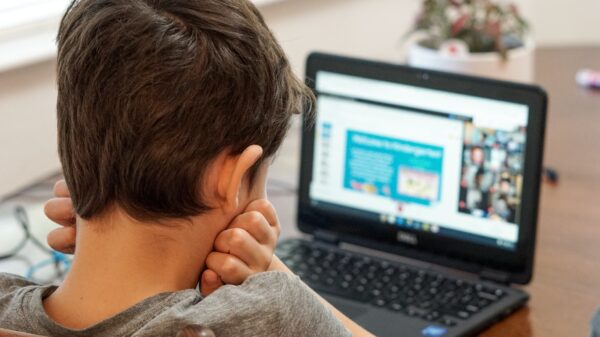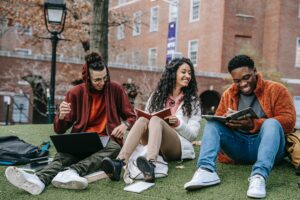
As the end of the school year approaches, it’s easy to get caught up in the excitement of summer break and forget to take a moment to reflect on all that has been accomplished. However, carving out time for reflection can be one of the most powerful mindfulness practices for both teachers and students. By taking stock of what worked well, what didn’t go as planned, and how everyone grew throughout the year, we can gain invaluable insights that will help us improve our teaching and learning strategies going forward. So grab a journal or find a quiet spot to sit down and join us as we explore the power of reflection in this blog post.
Introduction to Mindfulness Practices
Reflection is a powerful tool that we can use to help us make meaning of our experiences and learn from them. Mindfulness practices can help us to cultivate the quality of attention that is necessary for effective reflection. In this blog post, we will explore some mindfulness practices that can be used to support teachers and students in reflecting on their experience of the school year.
Benefits of Reflection for Teachers and Students
Reflection is a powerful tool that can help teachers and students alike to process the events of the school year, identify areas of growth, and set goals for the future. By taking time to reflect on their experiences, both teachers and students can gain valuable insights that can help them to improve their practice and achieve greater success in the classroom.
There are many benefits of reflection for both teachers and students. For teachers, reflection can help to identify areas where they need to make changes in their instructional practices. It can also provide them with valuable feedback from their students about what works well and what needs improvement. Additionally, reflection can help teachers to become more aware of their own emotions and reactions to events in the classroom, which can enable them to better manage their own stress levels and create a more positive learning environment for their students.
For students, reflection can be a helpful tool for processing information and consolidating learning. It can also assist students in identifying areas where they need further support or clarification. Additionally, by reflecting on their experiences, students can develop greater self-awareness and learn how to effectively manage their emotions. Ultimately, reflection can help both teachers and students to become more mindful of themselves and their surroundings, which can lead to improved academic performance and greater well-being.
Tips on How to Incorporate Reflection into the Classroom
Reflection is a powerful tool that can help students to process their thoughts and feelings, gain insights into their behavior, and develop a greater understanding of themselves and the world around them. As teachers, we can encourage our students to reflect on their experiences in the classroom by incorporating some simple reflection activities into our lessons. Here are some tips on how to get started:
1. Model reflective thinking for your students. Throughout the day, take a few moments to pause and reflect on your own experiences and observations. Share your reflections with your students, explaining how they help you to make sense of what you’ve seen and heard.
2. Encourage students to keep a journal. A journal is a great way for students to capture their thoughts and feelings on a regular basis. Encourage them to write about both positive and negative experiences, as well as things they are curious about.
3. Create opportunities for group discussion. Reflection can also be done within groups! After reading a story or completing an activity in class, invite students to share their thoughts and feelings with their classmates. You may even want to facilitate a whole-class discussion where everyone has a chance to contribute their ideas.
4. Try out different types of reflection activities. There are many different ways that students can reflect on their experiences in the classroom. Some ideas include writing in a journal, drawing pictures, or creating collages. Experiment with different activities until you find ones that work well for your
Examples of Reflection Activities for Teachers and Students
As the school year comes to a close, it’s important for teachers and students to take time to reflect on the past year. Reflection helps us to process our thoughts and feelings, learn from our experiences, and set intentions for the future.
There are many different ways to reflect. Some reflection activities for teachers and students include:
1. Writing in a journal or blog
2. Creating a vision board or collage
3. Drawing or painting
4. Making a scrapbook or photo album
5. Taking an online quiz or personality test
6. Doing a self-assessment or performance review
7. Participating in a group discussion or brainstorming session
8. taking a nature walk or spending time in nature
9. meditating or practicing mindfulness
Strategies to Manage Stress During End-of-Year Reflection
One of the best things about mindfulness is that it can be practiced anywhere, anytime. Here are a few strategies to help manage stress during end-of-year reflection:
1. Take a few minutes each day to sit quietly and focus on your breath. This simple practice can help center and calm you, preparing you for reflection.
2. Make time for yourself each day, even if it’s just 10-15 minutes. During this time, do something that brings you joy or peace – read, write, take a walk, listen to music, etc.

3. Be gentle with yourself during this process – remember that reflection is not about finding fault or placing blame, but rather about gaining insights and understanding. Allow yourself the space and grace to grow and learn from your experiences.
Conclusion
Reflection is a powerful tool for both teachers and students alike. By taking the time to practice mindful reflection, we can gain valuable insights into our experiences over the past school year, learn important lessons, and set ourselves up for success in the future. We hope that these mindfulness practices have helped you find some peace of mind at the end of this tumultuous year. May your reflections lead to greater joy and understanding as we look forward to whatever comes next!







